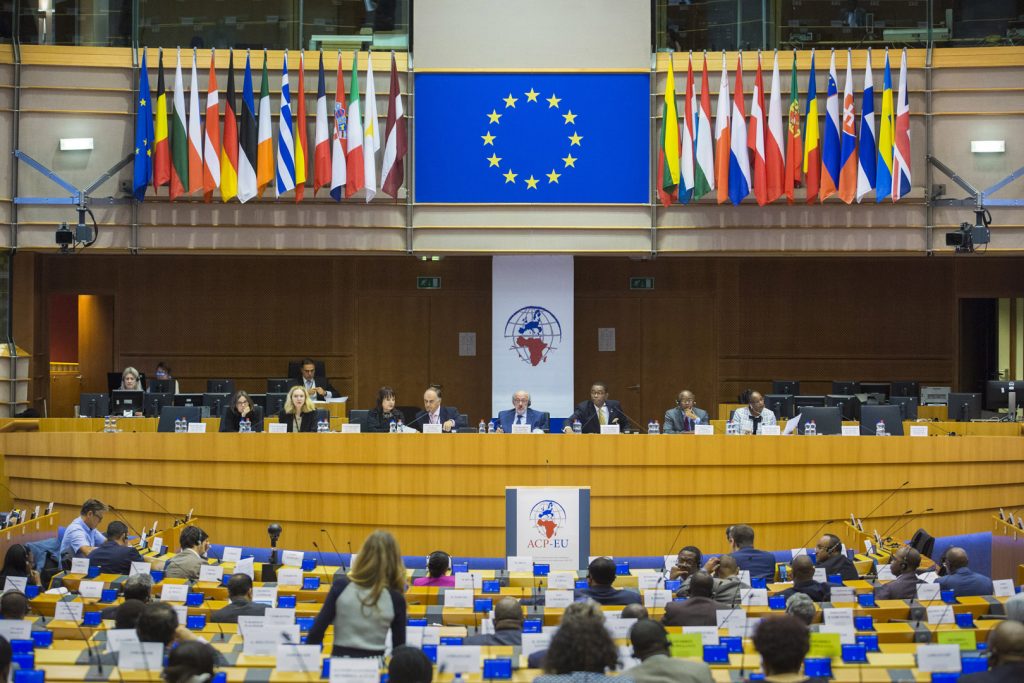Relationships between the European Union and the African, Caribbean and Pacific states (ACPS) are characterized, from a legal point of view, by the 2000’s Cotonou Regime, which determines trade, development aid and political ties between the two blocs.
In line with the expiry of the Cotonou agreement, the so-called Post Cotonou agreement has been negotiated to replace the 2000’s regime. The new agreement is expected to be signed in the first months of 2022 and, understandably, was part of a very complicated process of negotiation which involved EU-ACP institutions and member states.
By observing the partnership’s history and looking at the first true bargaining processes in the 20th century, we understand that negotiations have never been an easy part when it comes to the “special relationship” between the EU and the ACPS.
Yaoundé negotiations
The first regime stipulated between the EU – at that time still known as the European Economic Community (EEC)1 – and the former colonies was that one concluded in Yaoundé (1963). Negotiations for the stipulation of the Treaty of Yaoundé began in 1962 and involved, on an equal basis, the EEC with its member states and the 18 new independent states of the African continent.
Reasons that led parties to negotiate the Yaoundé agreement were threefold: first, there was the need to renew the regime provided for by the Treaty of Rome, which was supposed to be renegotiated by the end of 1962. Second, there was the phenomenon of independence of the former colonial territories: having acquired in all respects the political sovereignty over their territories, these new state entities wanted to corroborate their economic independence. Last, in addition to these reasons of formal nature, there were also some practical issues which were first and foremost associated with the European Development Fund (EDF) functioning and the Common External Tariff institution.
The position of France and Belgium – states with a very close relationship with their former colonies – was that the status of the Associates2 should entail the sequel of a preferential treatment, instead of considering the former colonies as third states. The position of Germany and the Netherlands did not focus on the protection that European states should have guaranteed to their African counterparts, but was rather aimed at favoring the competitive entry of former colonies into the world market. Luxembourg’s stance opposed the idea of creating a “special commercial regime” and favored, instead, the institution of a free trade area.
To conclude with the EEC members’ orientations, the Italian position was aimed at seeking a balance between the points of view of the other Community states, of the Associated states and, moreover, of the states that were not part of the Association, as codified in the Treaty of Rome.
The African position began to be built thanks to a meeting held in mid-December 1960 in the city of Brazzaville. African representatives very quickly arrived at a uniformity of preferences, with less effort than the member states of the EEC. Indeed, African states demanded:
- a balance of prices and greater protection of tropical products;
- new and efficient procedures for development aid;
- shared management of development aid;
- participation in decision-making processes relating to new requests that were formulated by non-associated states.
Outcome of negotiations
The negotiating strategy carried out by the Six EEC members was focused on reaffirming the precarious balance that had been achieved within the Community to meet some of the African requests. In particular, the position of the Netherlands was considered extremely rigid and, for some issues – such as the volume of funds allocated to the new EDF – very restrictive compared to what was requested by the African counterpart.
Many of the African demands were rejected.
For example, every proposal for shared management of the EDF and concerted setting of the Common External Tariff were rejected by the EEC. The same happened for the request of compensation due to the setting of the Common External Tariff. Further problems arose for internal divisions of the African states, which did not have an agreement on the distribution of the EDF’s resources. In the end, with great difficulty, a final compromise was found and, courtesy of the fifth inter-ministerial conference, it was possible to reach a conclusion of the agreement.
Conclusions
Negotiations of trade and political relationships are always the balance of very diverse, multiple positions. The history of the partnership between the EU and the ACP states clearly indicates that nothing can be taken for granted and that a regime renewal often entails a long bargaining process.
In my research, I focus on the ACP-EU relationship with the purpose to gain deeper knowledge of the origins, evolution and prospects of the “special partnership”.
Digging in its history, the relationship between the two blocs unravels both consistency and discontinuity: having a clear view of what happened in past processes bestows us new perspectives on how to frame current regimes with a meaningful and incisive method.
“People and History will easily forget the procedure, they will only remember the final result.”
― Herman Van Rompuy
1. At the time of the negotiations, the EEC consisted of its six founding members: Belgium, France, Italy, Luxembourg, the Netherlands, and West Germany.
2. States being part of the Association. Some of the former colonies of the Community’s members were part of this entity. The Special relationship between the Community and the Associates was enshrined in the Treaty of Rome (1957).
Picture © European Union 2018 – Source: EP




